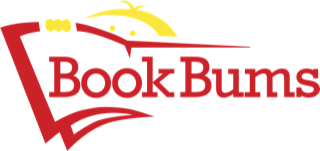
When thinking about teaching kids to read, what comes to mind? Chances are, you think about the alphabet. We teach kids that catchy tune, slap some letter magnets on the fridge, and drag out the alphabet puzzles. That’s a great start! But what kids really enjoy is getting your feedback about how they’re doing with all of those activities. Remember, YOU provide the energy that grows kids into readers!
Another way kids learn the letter names and corresponding sounds is from watching videos, but use caution. Not all videos are created equally.
The only a-b-c video that I recommend is
Have Fun Teaching’s A-B-C Rap.
Check out the video: Click Here to Watch.
I like this one because:
- They make each sound only one time. This is very important. When kids are decoding words, we don’t want them to say, “/b/, /b/, /b/, /i/, /i/, /i/, /g/, /g/, /g/! When associating a sound with a letter, we should make the sound one time.
- They make a pure sound for each letter. For the letter s, they make the sound /s/ (like a stream of air, through a toothy smile) and not /suh/.
- They show both the upper case and lower case letters, correctly formed, throughout the song.
- They indicate that two letters have two sounds (q = /kw/ and x = /ks/). That means that the word fox actually has four sounds. Hm.
- They recognize that there are two categories of letters, consonants and vowels. Kids must be able to identify vowels automatically. (We’ll take care of this in Foundations for Literacy I, lesson two.)
Please note that we are teaching the letter names along with their corresponding sounds. We do not want kids to recall the spellings of words without considering the sounds those letters represent. Rather than chanting a memorized “c (see), a (ay), t (tee) . . . cat,” we want to say “cat . . . /c/, /a/, /t/.”
Even if the spelling doesn’t appear to follow any phonics rule that you’re aware of, encourage your child to make the sounds so that they’ll see how they’d imagine that the word would be spelled, and connect that, in a meaningful way, to how the word is actually spelled.
For example, many kids spell the word want like this: wunt. Right? Who wouldn’t? It makes sense. I teach my kids to go ahead and write it that way, but then to recognize that that’s not the way we see it in the books we read. I teach them to catch the incorrect spelling, and to just add a rainbow onto the top of the letter u to turn it into a letter a.
In the same way, I encourage my students to make the sounds when decoding true “sight words”- words kids just have to remember – such as said.
My kids (who’ve been through Foundations classes) would say: /s/ /ay/ /d/ -sayd. And that’d be decoded correctly, but it’s not what the word actually says. So, now what?
I would address the word, acknowledging that /sayd/ doesn’t mean anything that we are aware of, and that it must say something else. I typically throw in a little southern accent, in there, to help the kids along in the association. With all of the attitude I can swagger, I say, “I sayd to get yourself ready for bed!” The kids usually say, “Oh! It’s said!”
Just a little explicit (& cRazY) instruction can go a long way.
With a little teaching and meaningful repetition, kids are not nearly as discouraged as adults with a few inconsistencies.
WARNING-
If you have a preschooler, you may hear seemingly knowledgeable folks encourage you to label everything. You know, a card with c-h-a-i-r taped to the chair and a table with t-a-b-l-e. Please smile politely at those people, but ignore that advice!
When we label things around our environments, it encourages kids to associate the written label to the actual thing without direct instruction about making the sounds across the words. We want to demonstrate that it’s a CODE we’re using to convey meaning. When we set kids up to rely solely on their memories of how words look, without reinforcing the sounds those letters represent, kids can get the wrong idea about words and how they work. (Think: dyslexia.)
We DO NOT want our kids to learn words by memorizing how they look. We DO want them to learn that letters are the keys to our code-based language, and that the code is knowable.
Do you have any questions or comments? I’d be happy to hear from you! Leave a comment below, or email me at [email protected].

